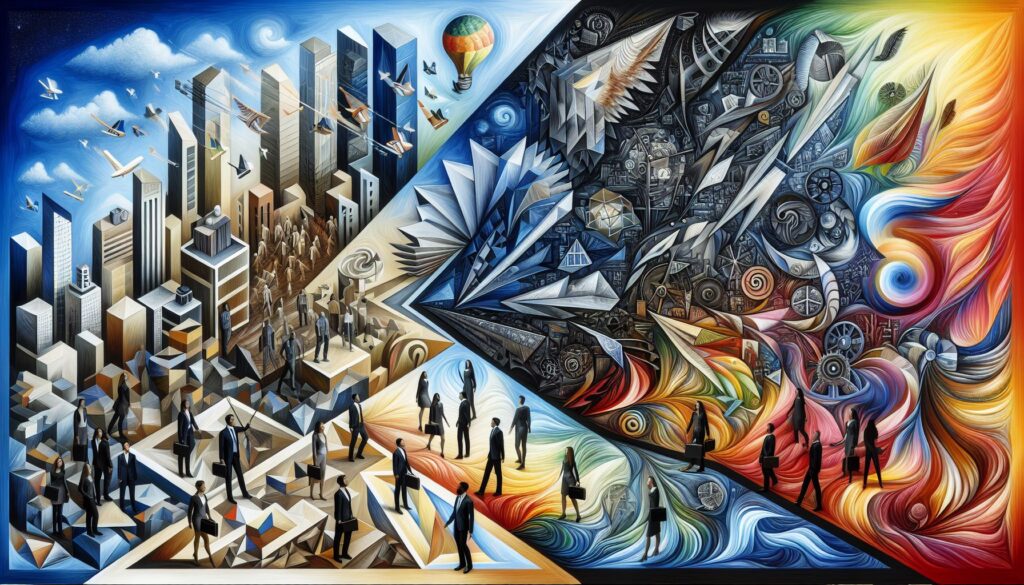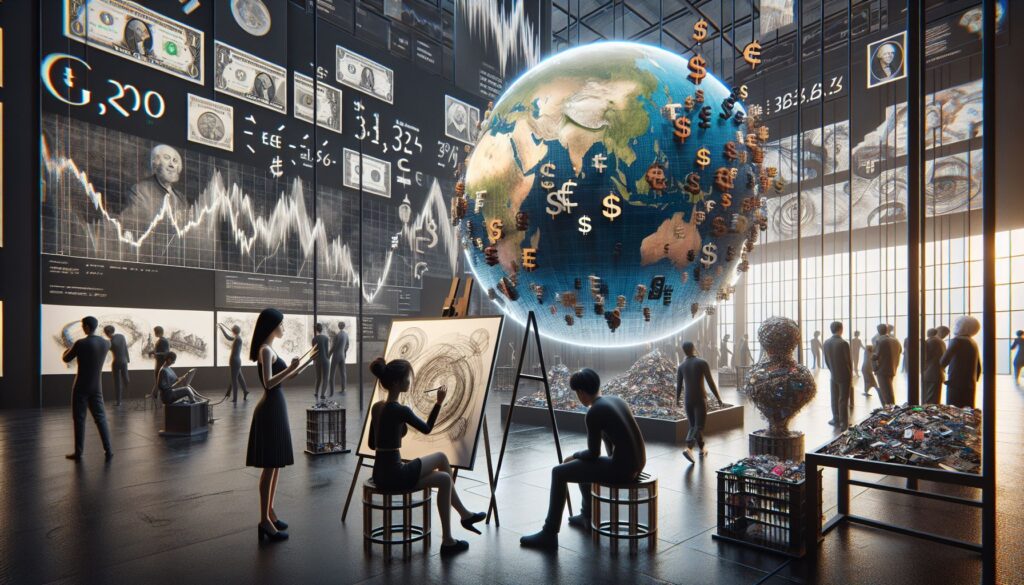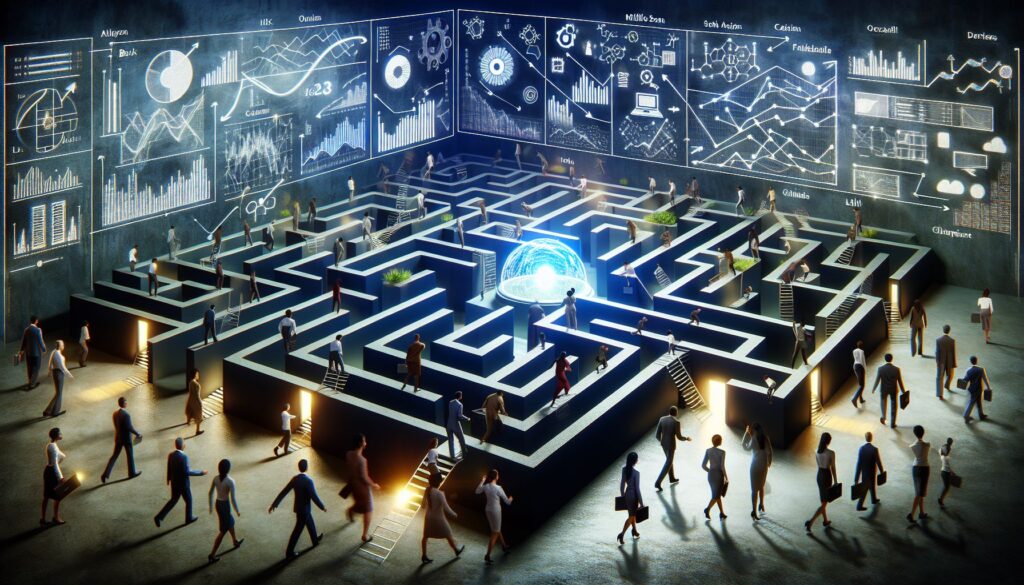The contemporary art scene is a living, breathing tapestry of innovation, creativity, and new enterprise. It is a potent intersection of entrepreneurship and aesthetics, blending innovative strategies with a deep affirmation for passion and originality. As we thread deeper into this fascinating world, we find a scene rich in culture, ripe with opportunities, and pulsating with the heartbeat of fresh commercial ventures.
 In recent years, the art world has been thriving with vibrant dynamism. Today, this realm enters the global market, carrying within it a baffling dichotomy of being business-oriented yet staying true to its unique narrative and expression of individuality.
In recent years, the art world has been thriving with vibrant dynamism. Today, this realm enters the global market, carrying within it a baffling dichotomy of being business-oriented yet staying true to its unique narrative and expression of individuality.
In this ever-evolving arena, there are several key shapers dictating the eco-system of this contemporary art sphere. These trends lay grounds for business strategies utilized by art curators, galleries, and individual artisans globally. The ubiquitous digital revolution, for instance, has seeped into this sphere, revolutionizing it entirely. Galleries and art spaces have expanded their reach beyond physical constraints, leveraging digital platforms to showcase their pieces to audiences worldwide.
Another innovation in the art world is the advent of NFTs (Non-Fungible Tokens) promising artists compensation for their work and intellectual property rights. This blockchain-powered digital ledger allows artists to retain ownership of their artwork and profit significantly from virtual sales, disrupting traditional artistic sales paradigms.
Furthermore, the integration of art and immersive technologies, such as Augmented Reality (AR) and Virtual Reality (VR), offers a more engaging and interactive experience for the art appreciator. This shift has paved the way for an inclusive experiential model that transcends the traditional limits of artistic interpretation and experience – a trend that is seeping into contemporary business models across industries.
The art world, like any industry, is also dealing with pressing issues related to sustainability. Eco-conscious artists and galleries are pioneering a movement focused on ‘Green Art’, utilizing sustainable materials and practices. This eco-friendly trend provides a platform for dialogues about environmental consciousness within the business realm.
As the world emerges from the brunt of the global pandemic, the art industry, too, has embraced the shift towards resilience and sustainability. The global emergency has acted as a catalyst, fast-forwarding digital progression and encouraging sustainable practices, therefore opening up new realms for artistic development and commercial growth.
Gazing into the crystal ball of the future, one can anticipate fresh shifts in the creative business arena. The integration of artificial intelligence in art production and distribution and its adoption in art analysis and preservation is undoubtedly a frontier yet to be fully explored. The growing influence of new media in art – characterized by the incorporation of innovative forms of digital technology- suggests an exciting evolution in artistic interpretation and entrepreneurship.
In the realm of contemporary art, commercial strategy and entrepreneurial vision embrace cultural heritage and individual creativity. The future, dipped in a palette of digital hues, looks set to redefine the boundaries between commerce, technology, and art. Embracing these changes allows the global artistic community to evolve and thrive, creating a landscape rich in potential and steeped in a fusion of business acumen and artistic innovation.
In conclusion, the ever-shifting tapestry of the contemporary art scene is vibrant with new opportunities, technological progress, and a broader connection to global audiences. They display a striking testament that art, indeed, imitates life. The future, whatever it holds, promises to create a more compelling, dynamic, and culturally rich palette for the world of business and entrepreneurship.




